Other than that I know nothing about it and
wouldn't pretend to; when I mentioned it to an archeologist friend of mine (in
its absence) I thought it was 'cave man' (i.e. Palaeolithic or Stone Age) and
she got quite excited saying "....there's
only a few known" but I guess, later metal-age ones are commoner?
Anyway, as part of the occasional ('very
occasional' these days, but I hope to have more non-toy stuff go up in the
future) 'Other Collectables' thread (which was a separate Blog back at the
start of my web-logging), I'll let the pictures speak for themselves, the
interesting thing is the double tapered hole which would produce a pinch-point,
allowing another hammering-tool or a block of wood, to force it on to a slightly
larger-diameter shaft and to then pack the ends with waxed or pitched-rope
maybe, before the/any wedges and cross-tying?
I don't know what kind of stone it is
either, but you can see it's a fine-grained material, and appears to be a
sedimentary rock similar to slate or shale, however from the chip off the
'blade' end you can see the granular look and stepped-edge of something more
like a fine granite? It's also bloody heavy!

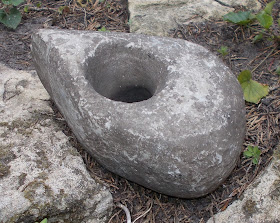
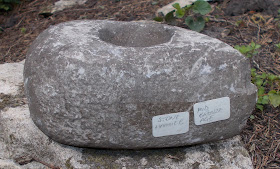

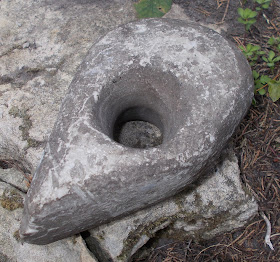
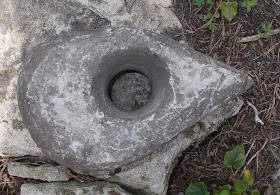
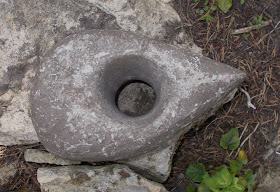


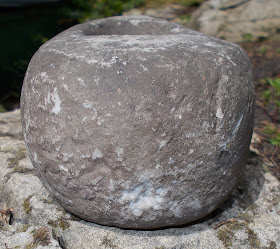
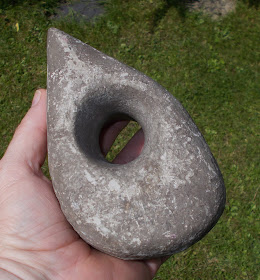
It looks genuine to me. I have couple of the same in museum I work at. Age - that could come from wide range of ages. Poor people made them well into roman times...
ReplyDeleteCheers Anon, presumably the ';early' Roman period was also 'bronze' so that would all tie in nicely . . . you couldn't have a stab at the materila from the pictures could you? It seems to fine for granite?
ReplyDeleteI did google them briefly on Friday and think this is a particularly nicely shaped one, a lot were fatter, blunter or rounder at the pointy-end?
H
Hi Hugh,
ReplyDeleteI think you have some volcanic rock, but don't take it for granted. I'm paleontologist, not petrologist.
Ones I have at museum are from Danube (Vinca culture) but they are more fine and smaller. In fact they made lot of similar stuff well into Roman and Dacian times here (perhaps even Middle age?) - especially fishing net weights and similar. It is not hard to make them in some grain mill and make perfect geometric shapes. Therefore why using expensive metal if this items are for heavy duty use or to be easily lost in the river? But don't let that disappoint you, it may very likely be very old. If you know the location where it was found it would be of more help to you. Local museum might have plenty of similar.
Yvan
I know what you mean Yvan; sometimes rope and string are better than hammer and nails! Cheers for that, it helps anchor it in the past - as it were!
ReplyDeleteMaybe I should get a handle on it and use it in the garden . . . it was meant to be be used, huh!
H
No, no :) Keep it safe! It is great artifact and it must be very old! Just try to find how old it is.
ReplyDeleteY
;-) Don't worry Yvan, it's a little blunt for the jobs I had in mind!!! I will try to get it dated at some point?
ReplyDeleteH